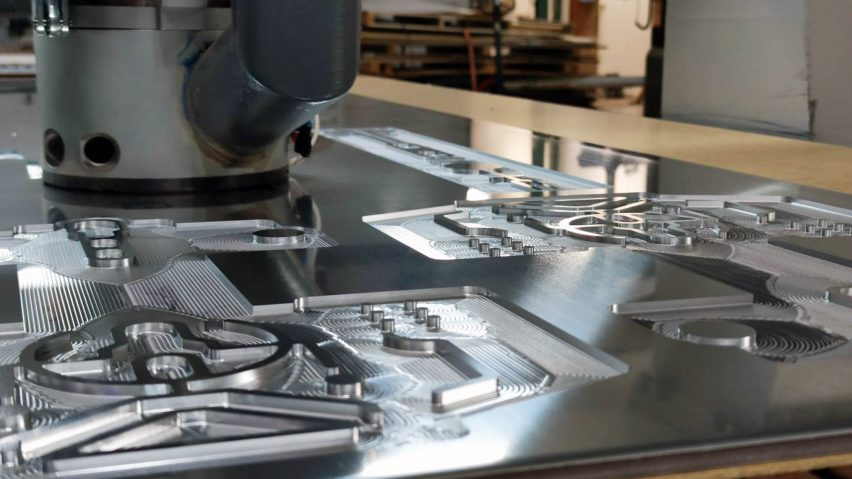
Computer-controlled cuts leave "ghost traces" on HAHA Studio homeware
As part of the Collectible design fair in Brussels, Swedish firm HAHA Studio has launched a range of futuristic furniture and lighting that lays bare the digital fabrication technique through which it was created.
The Ghost series is made entirely from aluminium sheets cut into shape using a computer numerically controlled (CNC) milling machine, which leaves behind subtle traces as it carves its way through the metal.
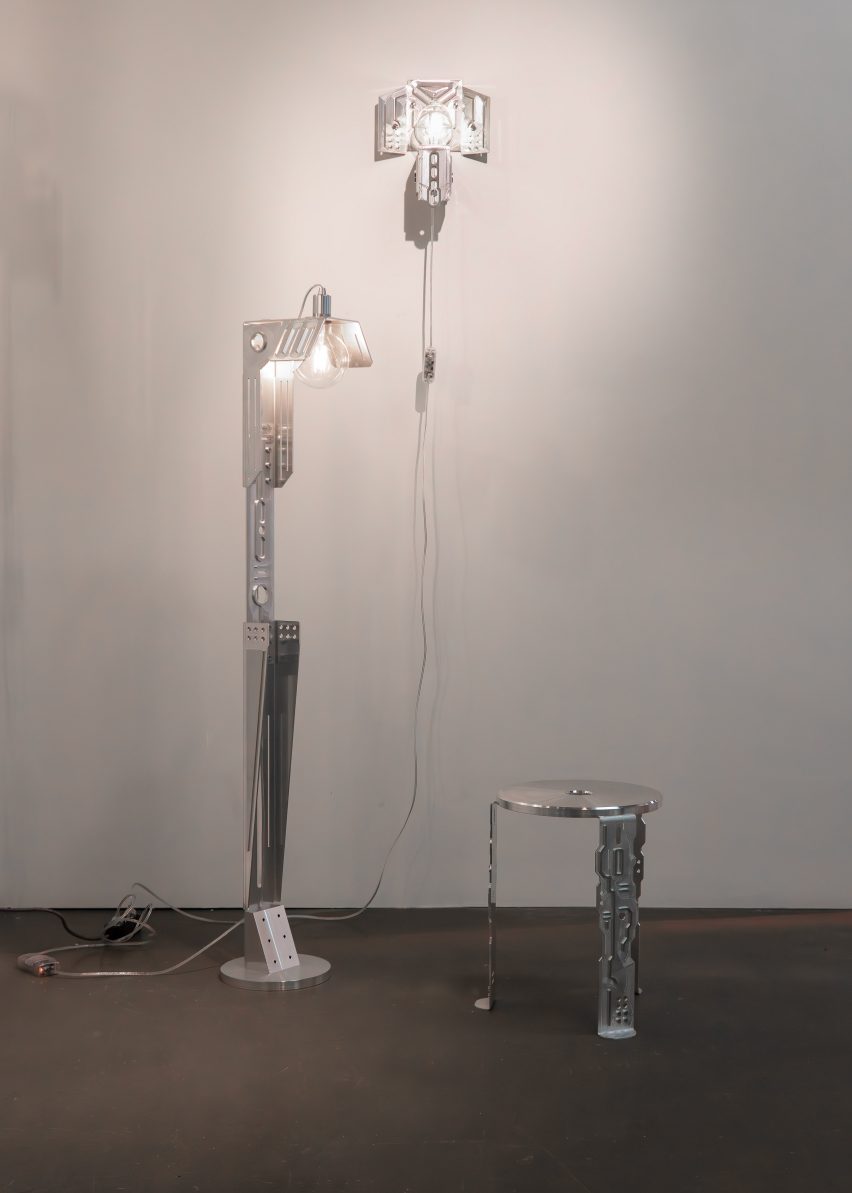
Normally these marks are cut away to reveal a smooth, precision-machined object. But HAHA Studio turned them into subtle decorations, evoking the maze-like geometries of a circuit board.
For the Ghost collection, these patterned aluminium sheets are folded to form a floor light, sconce and stool that wear the marks of CNC fabrication on their sleeve.
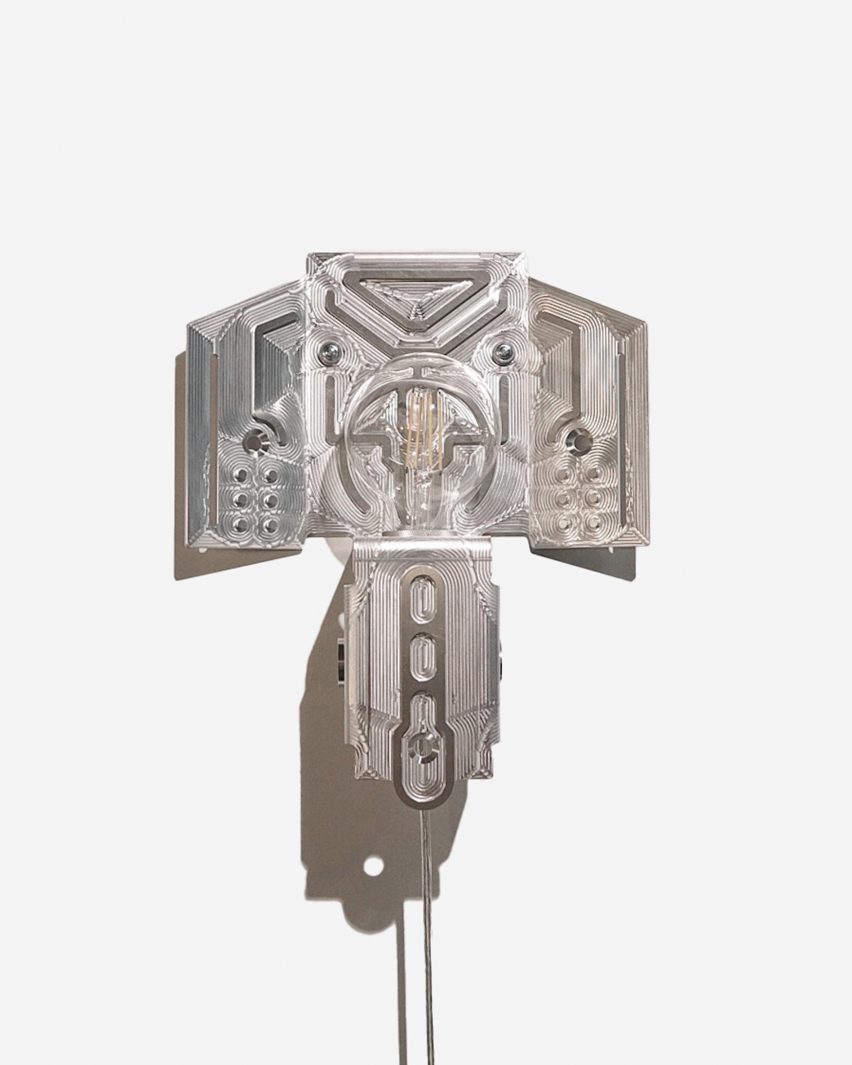
The project was born from a commission by Relay Design Projects – a kind of incubator run by London's Relay Design Agency that pushes designers to go beyond their usual remit and experiment with new materials, processes and formats.
"When we contacted HAHA Studio, they had just been at a factory where they were having something CNCed," remembered Relay Design Agency co-founder Neil Walsh. "And they realised that the negative that the machine was cutting away had all these little ghost traces.
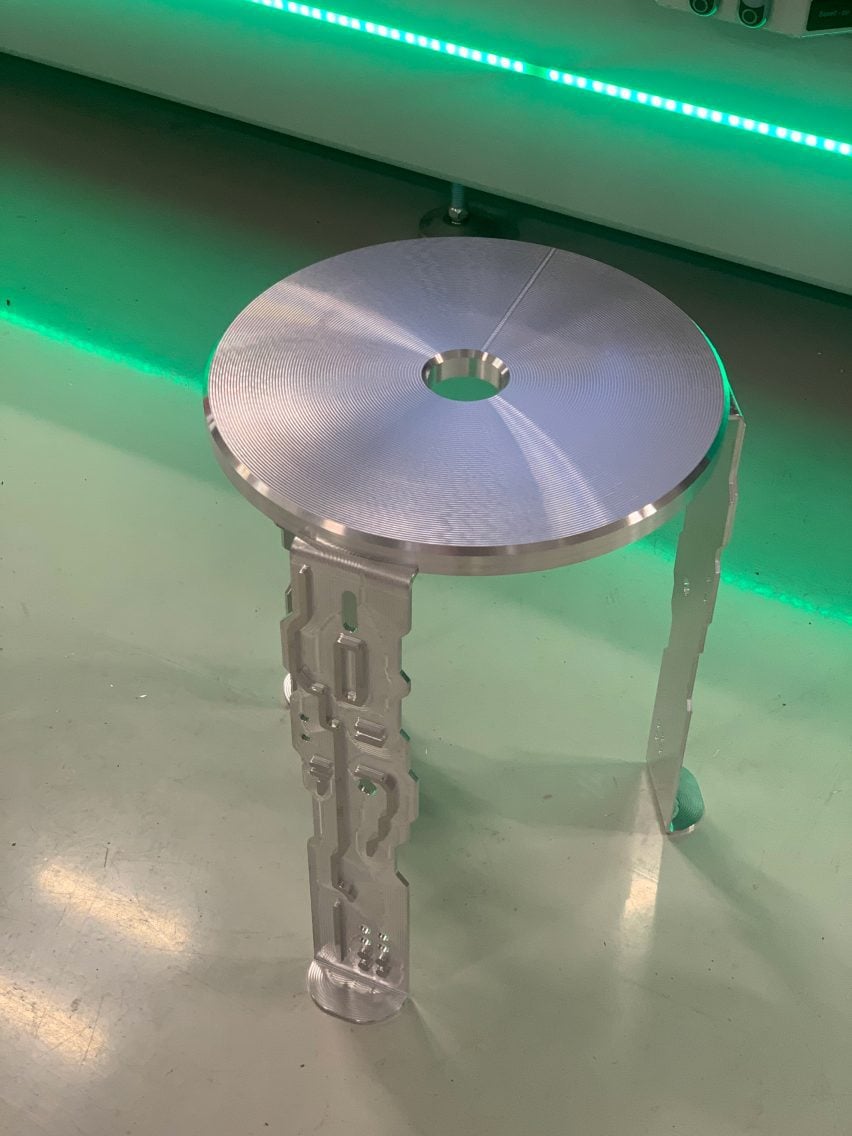
"You can't really feel them," he added. "They're very obvious to the eye, but not necessarily obvious to the touch."
These marks are created as the programmable cutting tool gauges slots, holes and other details out of a chunk of material, based on a 3D model of the desired object.
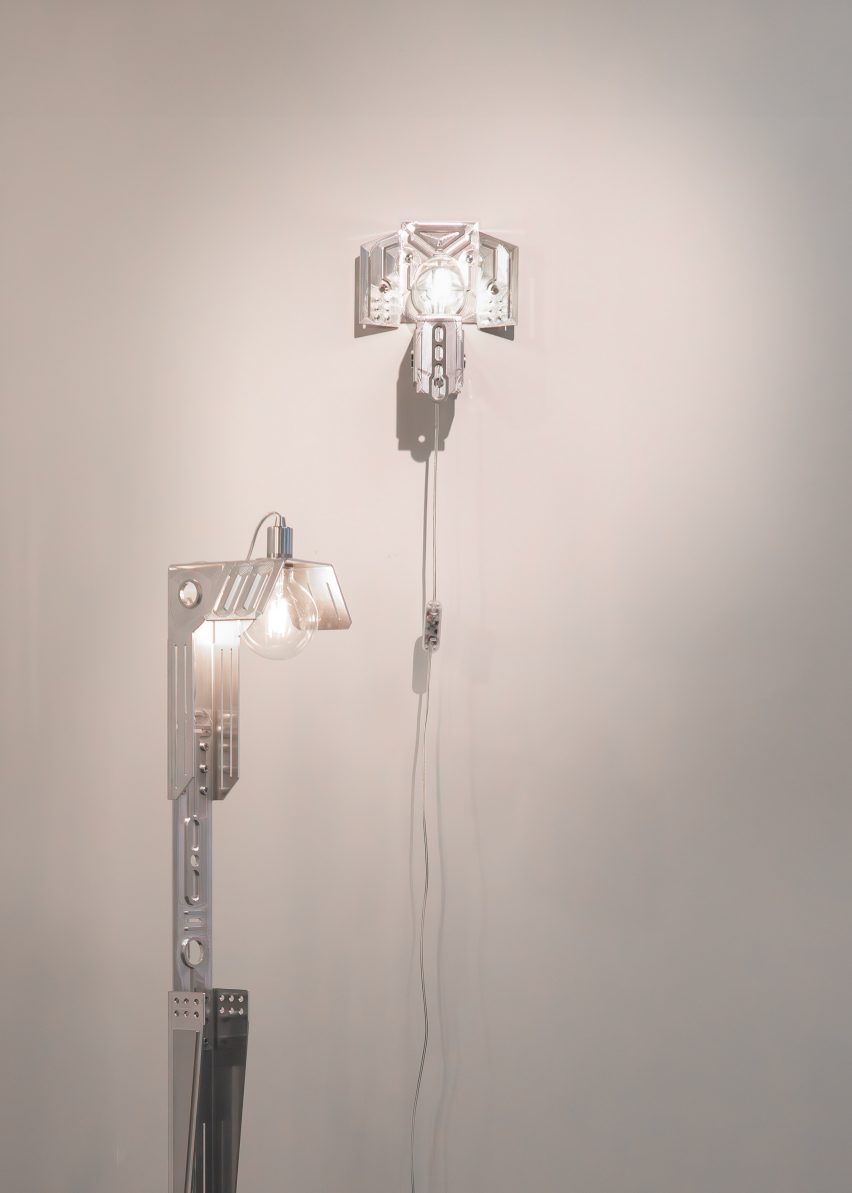
CNC milling is more commonly used to make precision components, such as valves and fixtures for spaceships or computers, than to make collectible design objects.
But through its Ghost series, HAHA Studio set out to highlight the machinery's unexpected decorative touch.
Although the duo pre-determined the holes and the raised geometric shapes found on the pieces, how the CNC machine cut around these details – and the patterns it left behind in the process – were left entirely up to the computer.
"The idea was they would set the material in place and let the machine decide the pattern, so they didn't have a huge amount of control over it," Walsh told Dezeen.
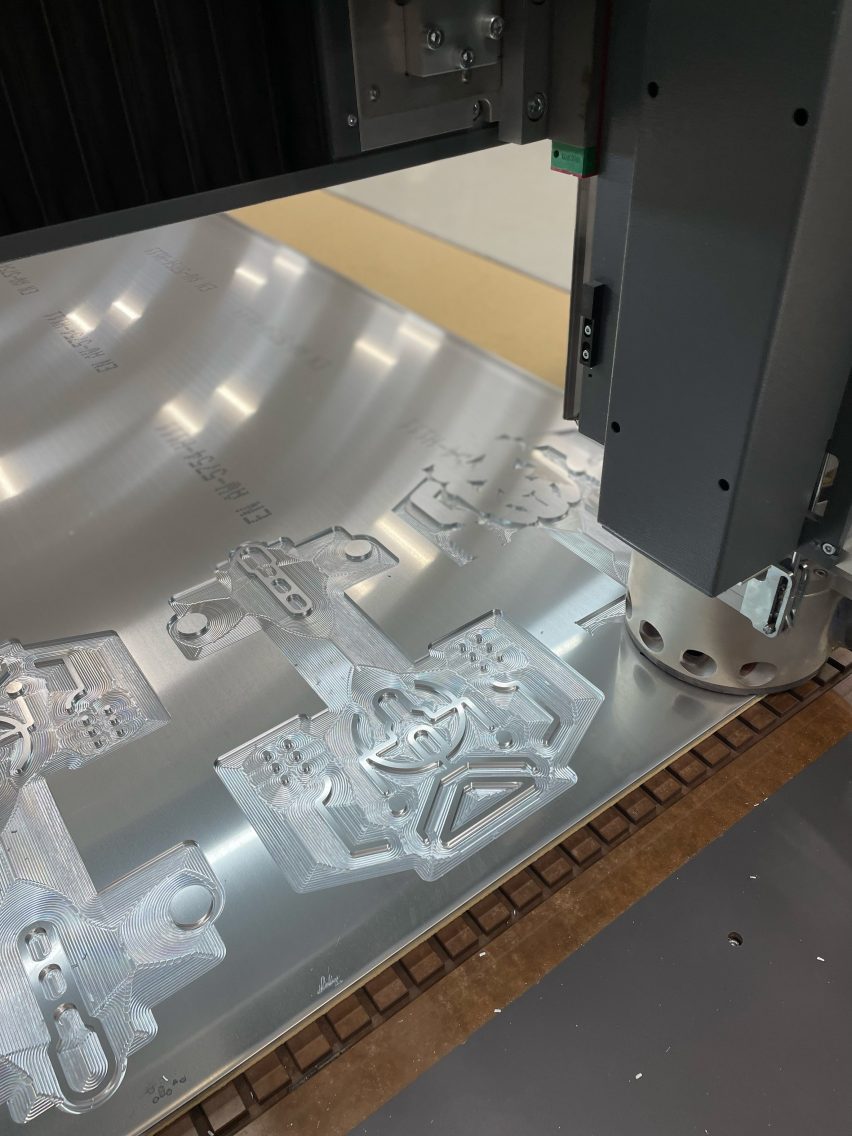
"You get some really quite organic curves and shapes, which almost look floral, and then these very strict grid lines," he added. "There's something almost art deco about them."
To create the final pieces, the flat metal cut-outs were simply folded into shape and secured by screws in a few places.
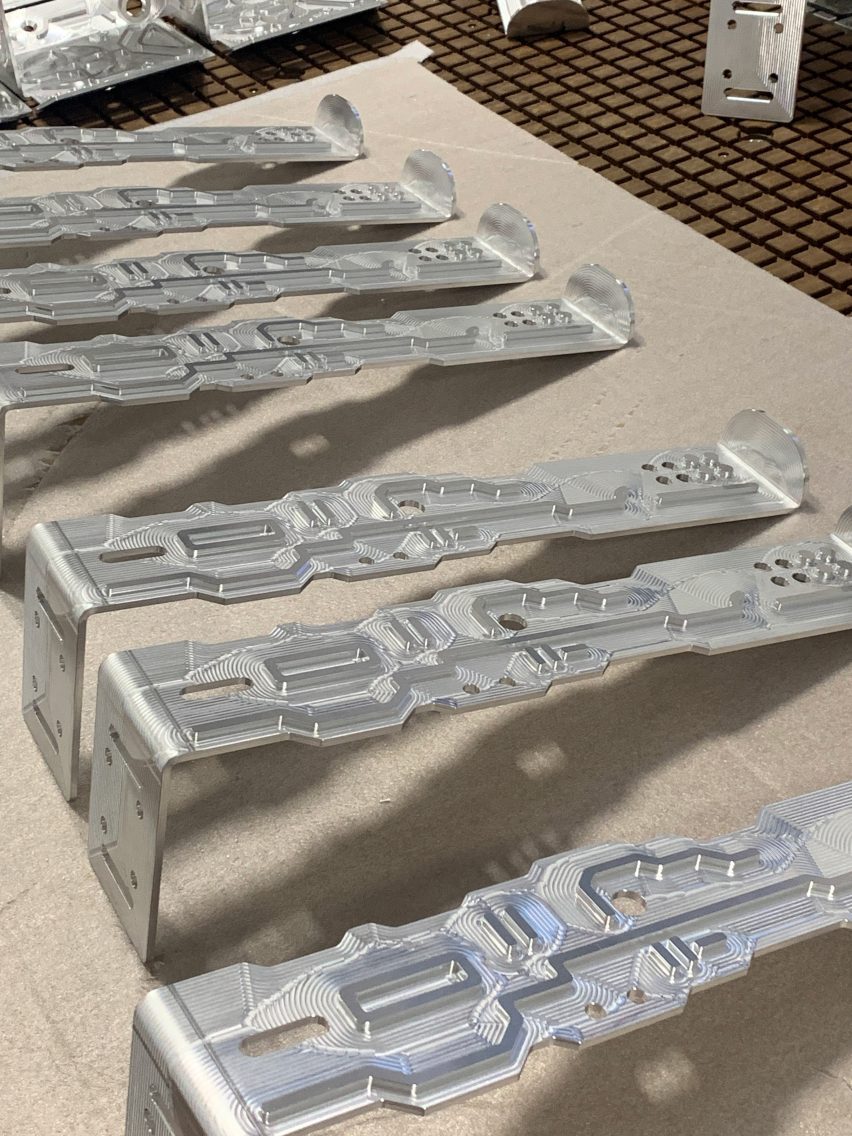
Save for the electronic parts, the pieces are made entirely of aluminium that was left uncoated and untreated so it can be easily and infinitely recycled.
The collection is evidence of a growing trend amongst designers, who are increasingly using raw aluminium to make mono-material products including the One Side Sawn collection by Studio ThusThat and David Taylor's Knuckle lights, which were crowned lighting design of the year at the 2023 Dezeen Awards.
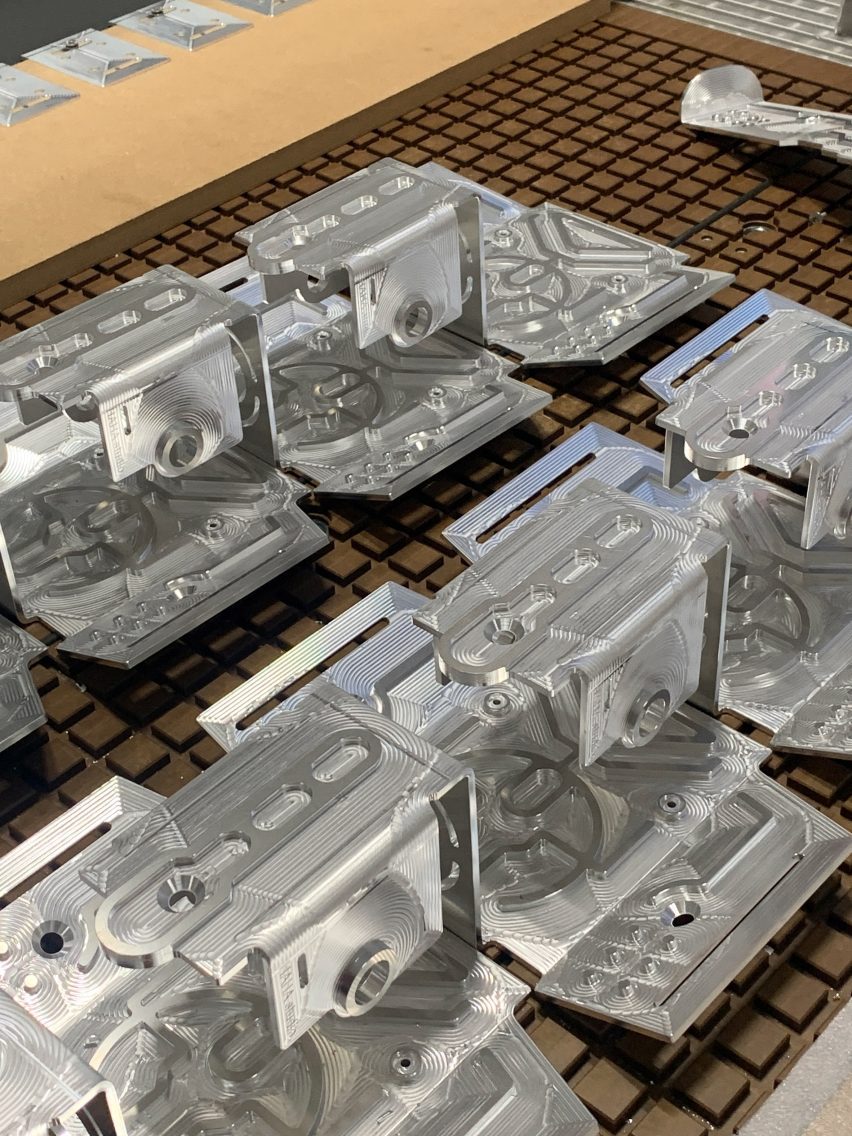
"There's a lot of energy involved in extracting the aluminium but then it's endlessly recycled and I think that's becoming more desirable," Walsh said.
"It's not necessarily about velvets and everything being super plush. Having something that's really useful, interesting and eye-catching but also relatively sustainable and endlessly recyclable is a new form of luxury."
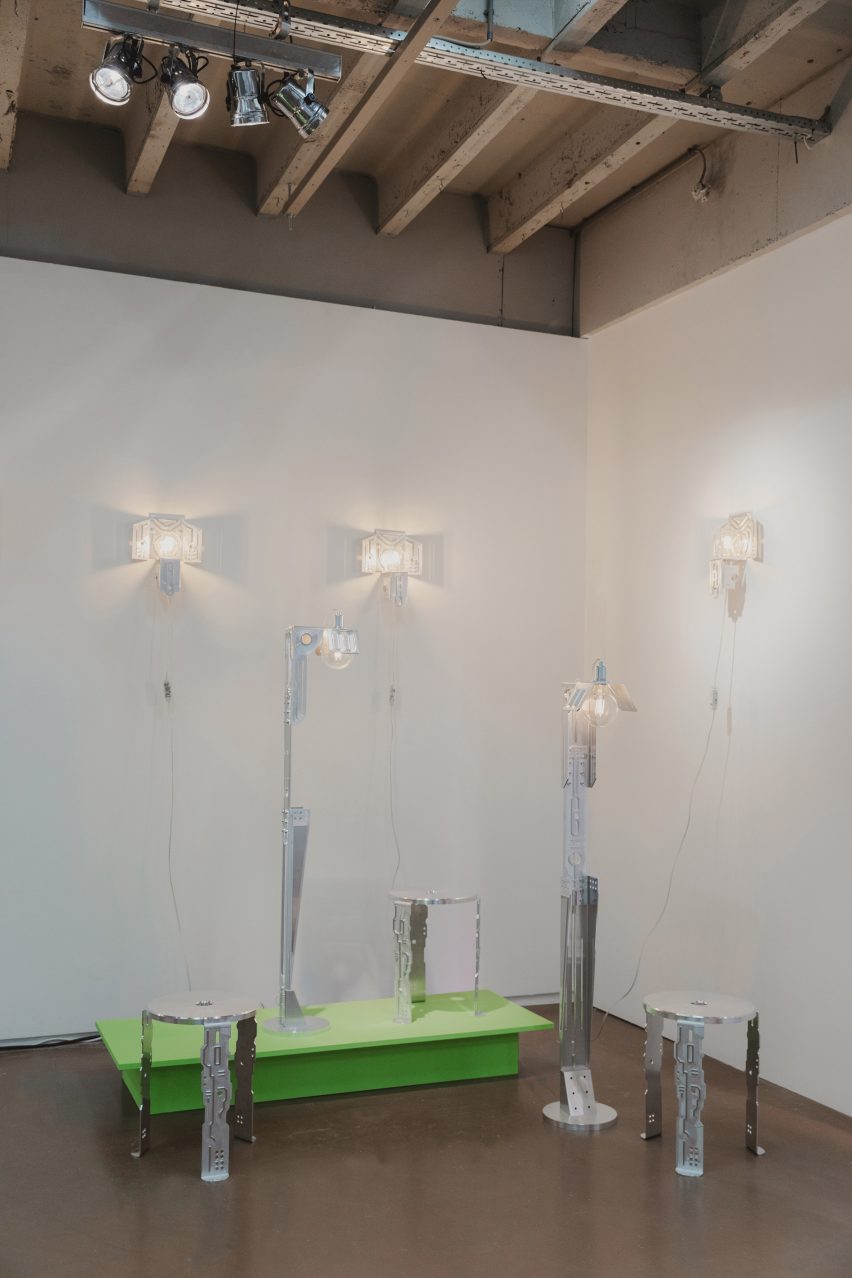
Dezeen previously highlighted HAHA Studio as one of seven emerging designers to watch from the 2017 Stockholm Furniture Fair, where Chiang and Eskafi exhibited a series of smiley-shaped lamps.
The duo went on to create a rainbow version of the design for the first-ever cohort of Relay Design Projects, which went on display at the 2020 Collectible design fair – the last one to take place before the coronavirus pandemic.
Collectible 2024 took place from 7 to 10 March 2024 at the Vanderborght Building in Brussels. See Dezeen Events Guide for an up-to-date list of architecture and design events taking place around the world.